
Completely engaged. That’s how Joe Coyle feels about his life at Judson Manor.




Completely engaged. That’s how Joe Coyle feels about his life at Judson Manor.



An award-winning journalist who has lived in Paris, Santa Fe, and New York City, he arrived in July 2020 via the suggestion of a fellow resident. He’s been delighted ever since. “As a writer, I enjoy spending time alone, and these surroundings are perfect: my apartment is quiet, and the views overlooking the Cleveland Museum of Art are lovely. But by far the best part of Judson is the people. Everyone is so knowledgeable about art and culture. I wanted to have stimulating company to spend my time with, and I’ve found that here. These are wonderful, interesting people,” says Joe. Read the full story at judsonsmartliving.org/blog
Learn more about how Judson can bring your retirement years to life! judsonsmartliving.org | 216.446.1579

 Judson Park Cleveland Heights | Judson Manor University Circle | South Franklin Circle Chagrin Falls
Judson Park Cleveland Heights | Judson Manor University Circle | South Franklin Circle Chagrin Falls
it’s all about.”Joe Coyle
Friday, November 25, 2022, at 7:30 p.m. Saturday, November 26, 2022, at 8:00 p.m. Sunday, November 27, 2022, at 3:00 p.m.
Søndergård, conductorBenjamin Britten (1913–1976)
Violin Concerto, Opus 15 30 minutes
I. Moderato con moto — II. Vivace — III. Passacaglia
Stefan Jackiw, violin
INTERMISSION 20 minutes
Igor Stravinsky (1882–1971)
The Firebird (complete ballet) 45 minutes
Approximate running time: 1 hour 35 minutes
Thank you for silencing your electronic devices.
2022/2023 Season Sponsor
Friday evening’s concert is dedicated to Irad and Rebecca Carmi in recognition of their extraordinary generosity in support of The Cleveland Orchestra.
Support from friends like you keeps the music playing — and it’s even more important as 2022 comes to an end. Year’s end is a crucial time for giving. Your donation before December 31 helps us close the books strong, ready to start the New Year with big plans for the music you love

FEW COMPOSERS left as large imprints on music of the 20th century as Igor Stravinsky and Benjamin Britten. Stravinsky’s broken chords and driving rhythms — often written for Serge Diaghilev and his revolutionary Ballets Russes — helped score the dawn of Modernism. Meanwhile, Britten is lauded as the most important British composer since Henry Purcell. Together, they’re responsible for some of the most indelible works, particularly for the stage, of the past 120 years.
FEW COMPOSERS left as large imprints on music of the 20th century as Igor Stravinsky and Benjamin Britten. Stravinsky’s broken chords and driving rhythms — often written for Serge Diaghilev and his revolutionary Ballets Russes — helped score the dawn of Modernism. Meanwhile, Britten is lauded as the most important British composer since Henry Purcell. Together, they’re responsible for some of the most indelible works, particularly for the stage, of the past 120 years.

Remarkably, neither man carried a generous view of the other. In the 1960s, following the success of Britten’s War Requiem, Stravinsky (incorrectly) predicted that the British composer’s star would fade. Not to be outdone, Britten, after seeing Stravinsky’s opera The Rake’s Progress, memorably quipped: “I like the opera very much. Everything but the music.”
Remarkably, neither man carried a generous view of the other. In the 1960s, following the success of Britten’s War Requiem, Stravinsky (incorrectly) predicted that the British composer’s star would fade. Not to be outdone, Britten, after seeing Stravinsky’s opera The Rake’s Progress, memorably quipped: “I like the opera very much. Everything but the music.”
Fortunately for us, we don’t need to take sides as this weekend’s concerts, conducted by Thomas Søndergård in his Cleveland Orchestra debut, pair relatively early works by both of these towering figures.
Fortunately for us, we don’t need to take sides as this weekend’s concerts, conducted by Thomas Søndergård in his Cleveland Orchestra debut, pair relatively early works by both of these towering figures.
The exciting young violinist, Stefan Jackiw, is only the third soloist to perform Britten’s Violin Concerto with The Cleveland Orchestra. This unconventional yet gripping work was the first that Britten completed after leaving the U.K. for North America in the escalation toward World War II. A noted pacifist, Britten infuses it with the disquiet of a world on the brink.
top:
The exciting young violinist, Stefan Jackiw, is only the third soloist to perform Britten’s Violin Concerto with The Cleveland Orchestra. This unconventional yet gripping work was the first that Britten completed after leaving the U.K. for North America in the escalation toward World War II. A noted pacifist, Britten infuses it with the disquiet of a world on the brink.
Stravinsky was also in his 20s when Diaghilev took a chance on the young composer to write the score for his new ballet based on Russian fairy tales, which Søndergård leads in its entirety. Stravinksy was catapulted to fame by The Firebird — rooted in timeless folklore yet forging ahead toward a more dissonant and chaotic age.
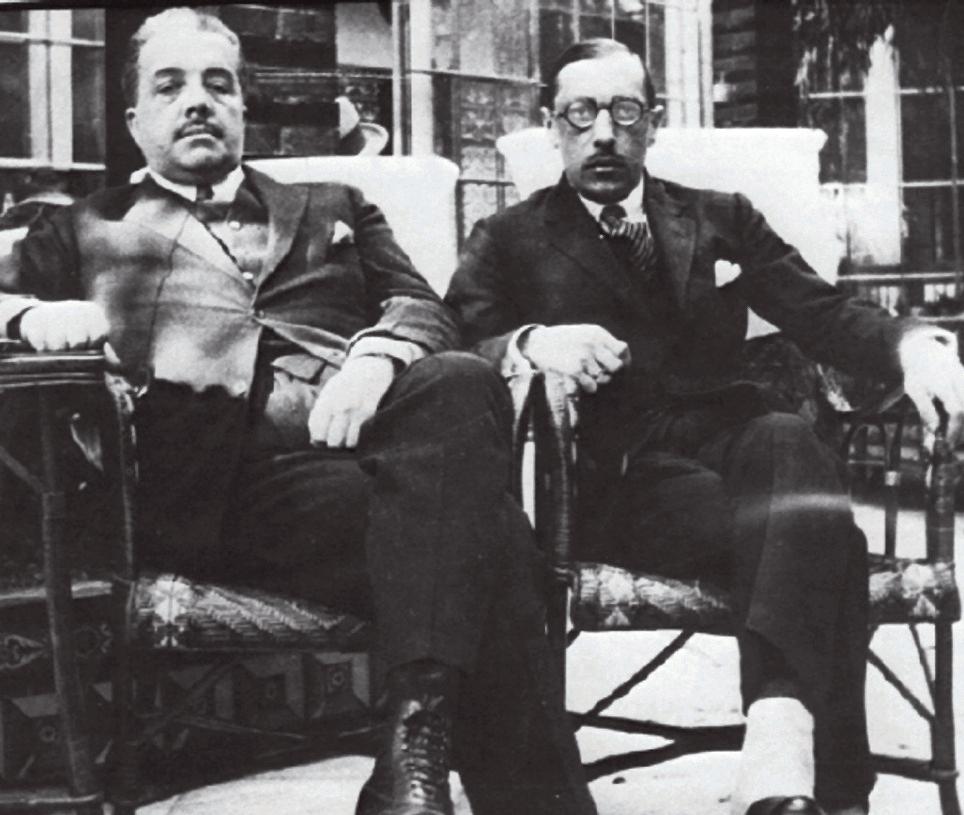
Stravinsky was Diaghilev took a composer to write new ballet based which Søndergård Stravinksy was catapulted Firebird — rooted forging ahead toward and chaotic age.
— Amanda Angel
BORN : November 22, 1913, Lowestoft, England
DIED : December 4, 1976, Aldeburgh, England
Ω
COMPOSED : 1938–39
WORLD PREMIERE: March 27, 1940, at Carnegie Hall with soloist Antonio Brosa and conductor John Barbirolli leading the New York Philharmonic Ω
Ω
CLEVELAND ORCHESTRA PREMIERE: May 29, 2014, with soloist Simone Lamsma and conductor Vladimir Jurowski. This weekend’s performances with Stefan Jackiw and Thomas Søndergård mark only the third time the Orchestra has performed this concerto. Ω
ORCHESTRATION: 3 flutes (2nd and 3rd doubling piccolo), 2 oboes, english horn, 2 clarinets, 2 bassoons, 4 horns, 3 trumpets, 3 trombones, tuba, timpani, percussion (snare drum, cymbals, glockenspiel, bass drum, tenor drum, triangle, whip), harp, and strings Ω
DURATION: about 30 minutes
BENJAMIN BRITTEN’S CONCERTOS have never fared as well as his vocal music. He wrote a Double Concerto for violin and viola in 1932, a Piano Concerto in 1938, a Violin Concerto in 1939, and the Cello Symphony in 1963, but none of these have a secure foothold with soloists. Any chance to hear them in live performance should be prized.
His own instincts may lie behind this, for during the period in which the Violin Concerto was written — the early part of 1939 — Britten was also much taken with some poems by Rimbaud and was frequently diverted from the concerto to set “just one more” French poem. The
vocal work became Les Illuminations, and the Violin Concerto was duly completed, and while the Illuminations is a favorite among singers, the concerto is nonetheless a work of high imagination and superlative craft.
The Violin Concerto was first heard in New York in 1940. Britten and his partner, Peter Pears, left England in May 1939 to go to Canada for a what was initially thought to be short visit. Their journey turned out to be a more-than
Composer Benjamin Britten and his partner Peter Pears depicted in 1952. The two left England together for North America in 1939, as Britten was writing his Violin Concerto.

three-year stay, spent almost entirely in the United States, before Britten felt the inexorable pull of his homeland.
The Violin Concerto was completed in September 1939 at Saint-Jovite, in the mountains of Quebec. Soon thereafter, Britten and Pears were living in Amityville, Long Island, as the guests of Dr. and Mrs. William Mayer, German refugees who supported the arts. The concerto was first played by the Spanish violinist Antonio Brosa, who lived in London and premiered Britten’s Suite for Violin and Piano (Opus 6) four years earlier. The conductor was John Barbirolli, who was in the midst of a brief stint as music director of the New York Philharmonic. This was Barbirolli’s introduction to Britten’s music, and

he followed this successful first performance a year later with the Sinfonia da Requiem, which commemorated the 2600th anniversary of the Japanese Empire.
As in other violin concertos from the same era — by Walton, Korngold, Barber, Shostakovich, and others — Britten’s soloist is not let off lightly. Technically difficult features — including multiple stopping, harmonics, playing at the extreme top end of the instrument’s range, and complex bowing patterns — all are required by Britten in abundance. At the same time, the music has a lovely lyrical quality, best illustrated by the
soloist’s opening melody, heard throughout the first movement, along with a striking figure heard first on the timpani alone — perhaps a tacit tribute to the opening of Beethoven’s Violin Concerto. A contrasting theme is spikier, but the overall mood is relaxed, especially when, toward the end of the movement, the strings play the opening lyrical theme in the manner of a swooning serenade.
The scherzo movement has a swift, grotesque character not unlike that of similar movements by Shostakovich. The contrasting middle section is a nonchalant phrase heard over and over again until the soloist’s wiggling in the stratosphere is taken over by two piccolos while the tuba rises cautiously from the depths — an extraordinary passage. The scherzo material returns and abruptly gives way to a solo cadenza, which introduces material from both scherzo and first movement amid the usual violinistic muscle exercises.
At the end of the cadenza the soloist deliberately steps up a high scale, and at the point where the finale movement begins, recalls the lyrical theme from the first movement. This should not distract us from the entry of three trombones in unison, who pick up the rising scale and answer it with a scale leading downwards. This simple up-and-down contour is the mortar that binds the last movement together. Britten called it a Passacaglia, although it is not a strict example of this form (which traditionally presents an
unending and repeated bassline over which other materials are developed). The scales up and down are easily followed, while the music moves through a variety of keys and textures. At one point, the music has a martial character, but soon afterward the mood becomes very solemn and slow, led by the trombones.
There is no brilliant and noisy ending to this work. Rare among violin concertos, Britten’s concerto concludes in a quiet, moving hymn, and the question of whether it is to end in the major or the minor is left unresolved until the very last moment.
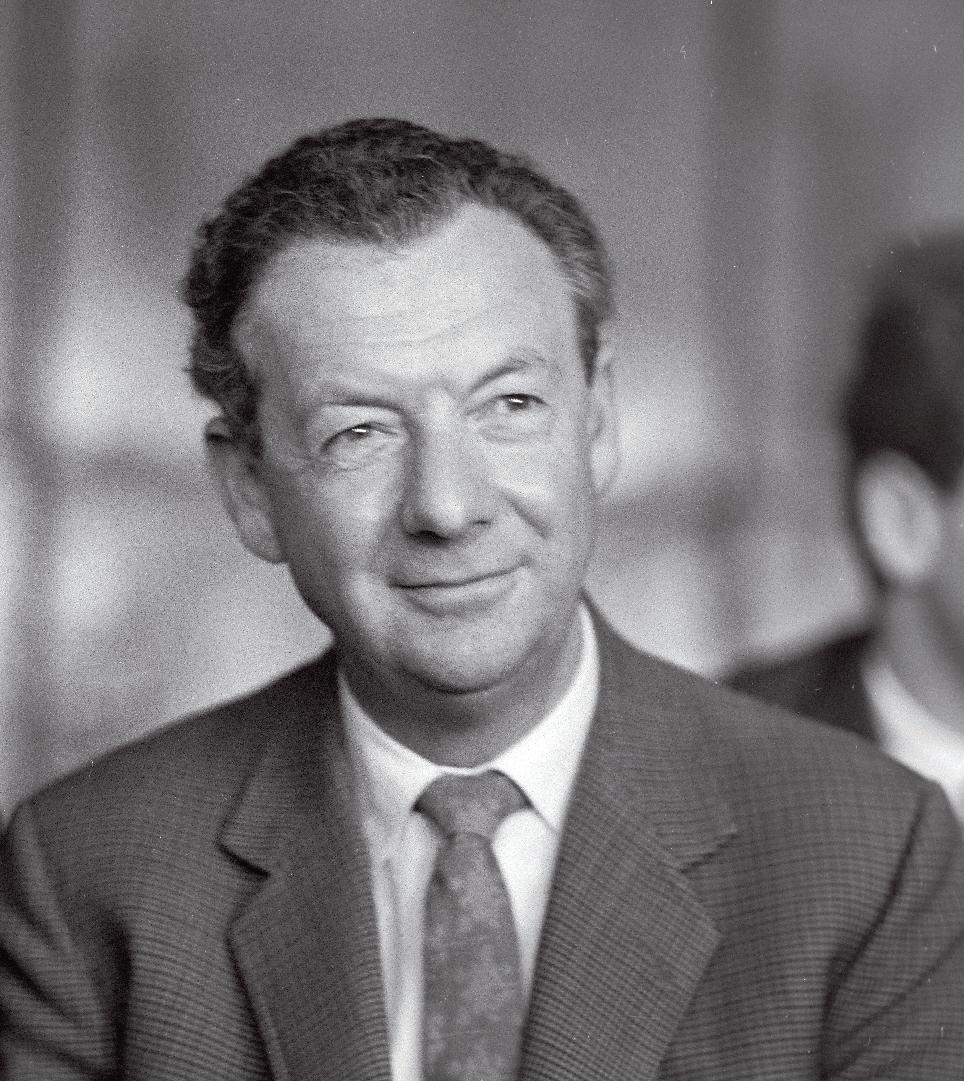










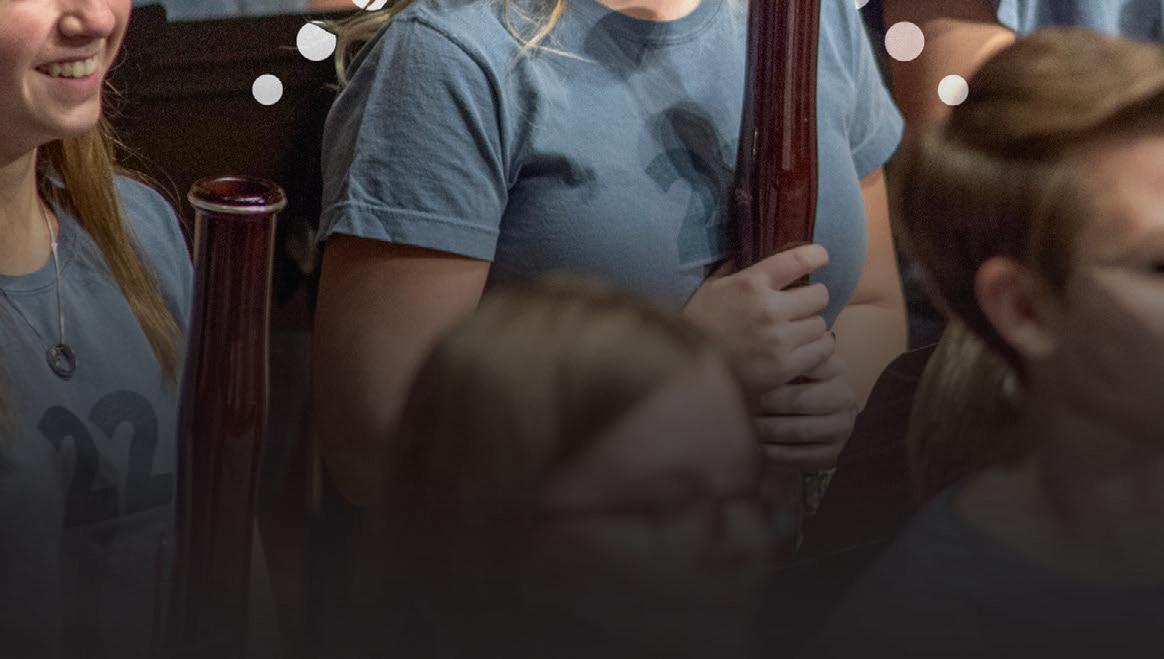






















BORN : June 17, 1882, in Oranienbaum, near St. Petersburg
DIED : April 6, 1971, in New York City Ω COMPOSED : 1909–10
Ω
ORCHESTRATION: 3 flutes (3rd doubling piccolo), piccolo, 3 oboes, english horn, 3 clarinets (3rd doubling E-flat clarinet), bass clarinet, 3 bassoons (3rd doubling contrabassoon), contrabassoon, 4 horns, 4 Wagner tubas, 6 trumpets, 3 trombones, tuba, timpani, percussion (bass drum, cymbals, glockenspiel, xylophone, tam-tam, tambourine, triangle, chimes), 3 harps, piano, celeste, and strings. Ω WORLD PREMIERE: June 25, 1910, at the Paris Opera House in a performance by the Ballets Russes with conductor Gabriel Pierné. Ω
CLEVELAND ORCHESTRA HISTORY: The Cleveland Orchestra has most frequently performed the Suite from The Firebird, with the first performances in November 1921 under Nikolai Sokoloff. The Orchestra first presented the complete ballet on November 23, 1945, at Public Auditorium in conjunction with The Ballet Theater (currently American Ballet Theatre). Ω DURATION: about 45 minutes
SERGEI DIAGHILEV’S Paris-based Ballets
Russes was one of the greatest dance companies in history. Diaghilev, the director, combined the soul of a brilliant artist with the mind and skills of a shrewd businessman. He mounted exciting and innovative productions, and he sought out the best dancers, artists, and composers available. For two decades from the company’s formation in 1909, he worked with or discovered
Tamara Karsavina danced the role of The Firebird in the first production of the ballet, set to Stravinsky’s score.
many of the most creative artists in the city — dancers, choreographers, painters, and composers. Debussy, Ravel, Prokofiev, and Falla all composed scores for the company.
Musically, however, Diaghilev never made a more sensational nor a more fruitful discovery than when he engaged the 27-year-old Igor Stravinsky in 1909 to write music for Michel Fokine’s new ballet for the next season, The Firebird. It was the start of a long collaboration that would produce a series of ground-breaking scores — Pétrouchka, The Rite of Spring,
Les Noces, Mavra, and Apollon Musagète — and which ended only with Diaghilev’s death in 1929.

For many years, Russia and France had enjoyed a great affinity. A political alliance between the two countries had brought Russia closer to France, while France had always been a strong presence in Russia, where French was the language of the educated classes. At the same time, geographical distance and cultural difference infused Russian art and artifacts with an exotic flavor in the eyes and ears of the French. Both Debussy and Ravel admired and found inspiration in the music of the 19thcentury Russian masters Mussorgsky and Rimsky-Korsakov.
To create a story of an appropriately Russian flavor, Fokine incorporated several Russian fairytales into the
scenario of The Firebird. The stories of the beneficent Firebird and the evil ogre Kashcheï-the-Immortal were combined together in a single plot, which Eric Walter White summarized in his standard book on Stravinsky:
A young Prince, Ivan Tsarevich, wanders into Kashcheï’s magic garden at night in pursuit of the Firebird, whom he finds fluttering round a tree bearing golden apples. He captures it and extracts a feather as forfeit before agreeing to let it go. He then meets a group of 13 maidens and falls in love with one of them, only to find that she and the other 12 maidens are princesses under the spell of Kashcheï. When dawn comes and the princesses have to return to Kashcheï’s palace, Ivan breaks open the gates to follow them inside; but he is captured by Kashcheï’s guardian monsters and is about to suffer the usual penalty of petrifaction, when he remembers the magic feather. He waves it; and at his summons the Firebird appears and reveals to him the secret of Kashcheï’s immortality (his soul, in the form of an egg, is preserved in a casket). Opening the casket, Ivan smashes the vital egg, and the ogre immediately expires. His enchantments dissolve, all the captives are freed, and Ivan and his Tsarevna are betrothed with due solemnity.
Originally, Diaghilev commissioned Russian composer Nikolai Tcherepnin to write the music for The Firebird. When Tcherepnin withdrew from the project, both Anatoly Lyadov and Alexander
In 1915–16, Serge Diaghilev famous Ballets Russes embarked on their first tour to the United States, bringing Clevelanders the ballet Pétrouchka, a new hunger for Russian fashion, and a first taste of Igor Stravinsky’s music, one that proved bitter to some: Wilson G.Smith of the Cleveland Press called the music a “galaxy of cacophony.”
When the composer himself came to Cleveland — he made six trips to conduct The Cleveland Orchestra from 1925 to 1964 — he was more warmly received and even produced a series of recordings with the Orchestra.
FEBRUARY 1925 : The composer makes his conducting debut with the Orchestra
Stravinsky conducted The Cleveland Orchestra in his score to the ballet, The Fairy’s Kiss, in 1955. A recording of the performance was released the following year.


in a program anchored by the 1919 Suite from The Firebird. Both composer Roger Sessions and the noted teacher Nadia Boulanger give lectures leading up to the anticipated performances in Cleveland.
FEBRUARY 1937 : Stravinsky joins the Orchestra on tour in Princeton, N.J., and Allentown, PA, before leading a series of concerts at Severance, spanning works by Bach, Mozart, Weber, and his own.

JANUARY 1947 : The Orchestra kicks off the new year with an all-Stravinsky program led by the composer, featuring a newly reorchestrated version of the first scene of Pétrouchka. Elmore Bacon of the Cleveland News, writes, “Stravinsky put vigor and thrill into this music.”
Stravinsky made three more trips to Severance — in December 1952, December 1955, and December 1964 — all of which produced recordings with the Orchestra. In 1955, he expressed his admiration for the ensemble remarking, “I have found The Cleveland Orchestra a wonderful musical organization. I am delighted with it and the rehearsals have spoiled me. I am really a happy man batoning this fine group.”
Glazunov were approached. For whatever reasons, Diaghilev could not come to terms with either more experienced composer, so he approached Stravinsky, who had already worked for him as an orchestrator, and whose short orchestral piece Fireworks had greatly impressed him. The young composer, honored by the commission, put aside his work on the opera, The Nightingale, and began work on the ballet instead.
To describe the magic world of fairy birds and evil sorcerers, Stravinsky had a whole tradition to build on, a tradition he had inherited from his teacher Rimsky-Korsakov. In the last years before his death in 1908, Rimsky had written three operas on fantastical subjects, one of which bore the title Kashcheï the Immortal.
In these operas — as well as a number of his other works — Rimsky-Korsakov made ample use of a special scale Russian musicians came to know as the “Rimsky scale” (also known as the octatonic scale), which Stravinsky chose
to use. This particular grouping of tones, lying outside the major-minor system, is always associated with the evil Kashcheï in The Firebird.
The music of the magical Firebird itself is also chromatic in nature, related in part to the Kashcheï music. The motifs of the Tsarevich, on the other hand, are purely diatonic, built upon a traditional seven-note Western scale, and derived from a particular type of Russian folksong known as the “long-drawn-out song” (protyazhnaya pesnya).
Thus, although both the storyline and the musical styling of the ballet score grew out of Russian tradition, they seemed highly original in the West.
For all the Rimsky influence, Stravinsky’s first ballet also shows a remarkable degree of individuality. The handling of rhythm in particular is quite innovative — the score already contains typical Stravinskyan ostinatos, or stubbornly repeated figures. The orchestration also reveals the hand of a true young master. Even at this early age, Stravinsky knew how to draw the most spectacular effects from his enormous orchestra. One may cite special items like the famous harmonic arpeggios (broken chords) for strings in the introduction or solos for the small D clarinet at several points. But even more important are the many new combinations of instrumental colors appearing on virtually every page of the score.
To celebrate Stravinsky’s centenary, the Junior Committee of The Cleveland Orchestra commissioned a children’s book based on the story of The Firebird with illustrations by Julie Ann Hoover

The Introduction beings with the rumble of low strings, trombones, and bassoons, with the higher-pitched instruments entering gradually as the curtain rises on the opening section of the First Tableau, set in “The Enchanted Garden of Kashcheï.” The motif of the introduction is taken over by the violins, punctuated by short figures in the woodwind, harp, and celesta.
The following section, “Appearance of the Firebird,” finds Prince Ivan in pursuit of the title character. For the first time, the music becomes agitated as the anguished fluttering of the bird contrasts against a simple, Russian-flavored theme representing the prince. After a measure of general rest, the “Dance of the Firebird” begins. The melody in the brilliantly orchestrated dance is colored with piccolo flute and piccolo clarinet taking the lead; the harp and strings accompany with trills and broken chords. The plucked pizzicato in the cello provide rhythmic support.

In Prince Ivan’s “Capture of the Firebird,” flourishes in the woodwinds come to a sudden standstill and repeated chords in the four horns indicate that the bird is no longer free to move. That brings us to “The Firebird’s Supplications.”
A slow, expressive melody is played by solo viola, oboe, and english horn, before being taken over by the violins. The tempo speeds up at the Firebird’s plea, voiced by flute and oboe solos, and becomes more insistent. After a return of the slower theme, the prince (solo horn) lets the bird go, and its flapping
wings are heard in the woodwinds.
“The Appearance of the 13 Enchanted Princesses” is announced by a magical chord progression in the violins. “The Princesses’ Game with the Golden Apples” follows with fast-moving sixteenth notes in the strings. This scherzo is briefly interrupted by a lyrical middle section with solo clarinet.
The horn introduces the “Sudden Appearance of Prince Ivan,” expressed by a simple Russian tune. One of the ballet’s great melodies comes in the “Khorovod of the Princesses,” describing a round dance initiated by solo oboe and joined by strings, woodwinds, and eventually the first horn.
At “Daybreak,” a trumpet call heralds the arrival of dawn. A brief and forwardthrusting theme indicates that Prince Ivan is approaching the place where he will meet his great challenge. Three measures of energetic string scales mark “Prince Ivan Penetrates Kashcheï’s Castle.”
The descriptively titled “Magic Carillon, Appearance of Kashcheï’s Monster Guardians” and “Capture of Prince Ivan” feature the distinctive melodic style of
the evil sorcerer for the first time. The monsters charge Prince Ivan with a massive orchestral buildup; the motion stops abruptly as he is captured.

Austere brass chords proclaim “The Arrival of Kashcheï the Immortal” underscored with frightening tremolos in the strings and percussion. “Dialogue of Kashcheï and Prince Ivan” is hardly that, as this short section is entirely dominated by the sorcerer’s music.
The “Intercession of the Princesses” recalls the princesses’ theme from earlier in the ballet, but the melody is cut short by Kashcheï’s wild brass and percussion.
This brief allegro section, “Appearance of the Firebird” in which the Firebird’s familiar musical style is in evidence throughout, leads directly into the “Dance of Kashcheï’s Retinue, Enchanted by the Firebird.” More and more of Kashcheï’s minions are swept up in the ecstatic dance, with a gradual crescendo leading to a tutti climax.
A fast timpani roll introduces a syncopated motif of the “Infernal Dance of All Kashcheï’s Subjects,” arising from the lower registers (bassoons, horn, tuba) and gradually taken over by the entire orchestra. There is a lyrical countersubject symbolizing the plight of Kashcheï’s prisoners. As a total contrast, the “Lullaby” (Berceuse) is a delicate
song for solo bassoon accompanied by harps and muted strings. A dissonant fanfare accompanies “Kashcheï’s Awakening,” but the evil sorcerer’s end is imminent. “Kashcheï’s Death” is depicted by a powerful tutti downbeat and a rapidly descending orchestra figure accompanied by a decrescendo on the bass drum. A short interlude of divided string tremolos signal “Profound Darkness.”
The shorter Second Tableau begins with the “Disappearance of Kashcheï’s Palace and Magical Creations, Return to Life of the Petrified Knights, General Rejoicing.” This finale, in which all the surviving characters celebrate the wedding of Prince Ivan and the princess, contains the most famous Russian folksong in the ballet. This beautiful melody, first played by the Prince’s horn, grows in volume and orchestration until
the full ensemble joins. Here, a significant rhythmic change is introduced: the symmetrical 3/2 meter is transformed into an asymmetrical 7/4, bringing the music to its culmination.

It is little wonder that The Firebird remained Stravinsky’s most popular work throughout his long life. He conducted hundreds of performances — mostly in the form of suites drawn from the complete score. Stravinsky created three of these, one in 1911, another in 1919, and again in 1945. Though the composer felt that this youthful effort overshadowed more important later works, Stravinsky had no reason to disavow the work that had catapulted him to fame at 28.
— Peter Laki Thomas Søndergård
Thomas Søndergård
DANISH CONDUCTOR Thomas Søndergård is the current music director of the Royal Scottish National Orchestra (RSNO), following six seasons as principal guest conductor. In July 2022, it was announced that he would succeed Osmo Vänskä as music director of the Minnesota Orchestra in 2023/24. Between 2012 and 2018, he served as principal conductor of BBC National Orchestra of Wales (BBC NOW), after his tenure as principal conductor and musical advisor of the Norwegian Radio Orchestra.
He has appeared with many notable orchestras, such as the Berliner Philharmoniker, Mahler Chamber Orchestra, Leipzig Gewandhausorchester, Orchestre National de France, London Symphony Orchestra, and Royal Concertgebouw Orchestra. In Scandinavia, where he is a familiar figure, he has led the Oslo Philharmonic, Gothenburg Symphony, Danish National Symphony, Royal Stockholm Philharmonic, Swedish Radio Symphony, Finnish Radio Symphony, and Helsinki Philharmonic.
The 2022/23 season will see Mr. Søndergård return to Edinburgh International Festival and the BBC Proms with the RSNO. Plans for the RSNO season include a full Brahms symphony cycle, Britten’s War Requiem, and further European touring. Mr. Søndergård makes extensive guest appearances in the U.S. this season, debuting with the Baltimore Symphony, The Cleveland Orchestra, Cincinnati
Symphony, and St. Louis Symphony, alongside returns to the Minnesota Orchestra, Houston Symphony, and Chicago Symphony. On the operatic stage this season, he returns to the Royal Danish Opera to conduct Strauss’s Elektra. In September, he led the Danish National Symphony Orchestra and soloist Isabelle Faust in the world premiere of Rune Glerup’s new violin concerto.
Following his acclaimed Royal Danish Opera debut (Kafka’s Trial), he has returned regularly to conduct a repertoire ranging from contemporary to mainstream, including Le Nozze di Figaro, Il Barbiere di Siviglia, La Bohème, The Cunning Little Vixen, Il viaggio a Reims, and Die Walküre, which won the 2022 Reumert award for Best Opera; as well as tours with the Royal Danish Orchestra. He has enjoyed successful collaborations with Norwegian Opera, Royal Swedish Opera, Bayerische Staatsoper, and Deutsche Oper Berlin.


STEFAN JACKIW IS one of America’s foremost violinists, captivating audiences with playing that combines poetry and purity with an impeccable technique. Hailed for playing of “uncommon musical substance” that is “striking for its intelligence and sensitivity” (The Boston Globe), Mr. Jackiw has performed in numerous major festivals and renowned concert halls around the world, including Carnegie Hall, New York’s Mostly Mozart Festival, Aspen Music Festival, Suntory Hall, and the Seoul Philharmonic. Mr. Jackiw frequently tours with his musical partners and longtime friends,
pianist Conrad Tao and cellist Jay Campbell, as part of the Junction Trio. He also enjoys collaborating with pianist Jeremy Denk, with whom he has toured the complete Ives Violin Sonatas.
Mr. Jackiw’s 2022/23 season includes a multi-city Junction Trio tour featuring the group’s Celebrity Series of Boston debut, alongside performances in New York City, San Francisco, Washington, D.C., and more. His European dates include performances with the Royal Scottish National Orchestra and Thomas Søndergård, performing Britten’s Violin Concerto, the Residentie Orkest and the Orquesta Sinfonica de Galicia with Anja Bihlmaier, and the Gävle Symphony with Christian Rief.
Highlights of recent seasons include his debut at The Cleveland Orchestra’s Blossom Music Festival with Juraj Valčuha; performances of Prokofiev’s Violin Concerto No. 2 at Carnegie Hall with Mikhail Pletnev; and the world premiere of American composer David Fulmer’s Violin Concerto No. 2 “Jubilant Arcs”, written for him and commissioned by the Heidelberg Festival, with the Deutsche Kammerphilharmonie under Matthias Pintscher. Mr. Jackiw has appeared with the Tokyo Symphony at Suntory Hall under the direction of Krzysztof Urbanski and the Seoul Philharmonic under Mario Venzago. He has also toured Korea, playing chamber music with Gidon Kremer and Kremerata Baltica, and toured with the Australian Chamber Orchestra playing and conducting Mendelssohn.




NOW IN ITS SECOND CENTURY , The Cleveland Orchestra, under the leadership of music director Franz WelserMöst since 2002, is one of the most sought-after performing ensembles in the world. Year after year, the ensemble exemplifies extraordinary artistic excellence, creative programming, and community engagement. The New York Times has called Cleveland “the best in America” for its virtuosity, elegance of sound, variety of color, and chamberlike musical cohesion.
Founded by Adella Prentiss Hughes, the Orchestra performed its inaugural concert in December 1918. By the middle of the century, decades of growth and sustained support had turned it into one of the most admired globally.
The past decade has seen an increasing number of young people attending concerts, bringing fresh attention to The Cleveland Orchestra’s legendary sound and committed programming. More recently, the Orchestra launched several bold digital projects, including the streaming broadcast series In Focus, the podcast On a Personal Note, and its own recording label, a new chapter in the Orchestra’s long and distinguished recording and broadcast history. Together, they have captured the Orchestra’s unique artistry and the musical achievements of the Welser-Möst and Cleveland Orchestra partnership.

The 2022/23 season marks Franz Welser-Möst’s 21st year as music director, a period in which The Cleveland Orchestra earned unprecedented acclaim around the world, including a series of residencies at the Musikverein in Vienna, the first of its kind by an American orchestra, and a number of acclaimed opera presentations.
Since 1918, seven music directors — Nikolai Sokoloff, Artur Rodziński, Erich Leinsdorf, George Szell, Lorin Maazel, Christoph von Dohnányi, and Franz Welser-Möst — have guided and shaped the ensemble’s growth and sound. Through concerts at home and on tour, broadcasts, and a catalog of acclaimed recordings, The Cleveland Orchestra is heard today by a growing group of fans around the world.














































Peter Otto
FIRST ASSOCIATE CONCERTMASTER Virginia M. Lindseth, PhD, Chair
Jung-Min Amy Lee
ASSOCIATE CONCERTMASTER Gretchen D. and Ward Smith Chair

Jessica Lee ASSISTANT CONCERTMASTER Clara G. and George P. Bickford Chair
Stephen Tavani ASSISTANT CONCERTMASTER
Wei-Fang Gu Drs. Paul M. and Renate H. Duchesneau Chair Kim Gomez Elizabeth and Leslie Kondorossy Chair Chul-In Park Harriet T. and David L. Simon Chair Miho Hashizume Theodore Rautenberg Chair
Jeanne Preucil Rose
Larry J.B. and Barbara S. Robinson Chair
Alicia Koelz Oswald and Phyllis Lerner Gilroy Chair
Yu Yuan Patty and John Collinson Chair
Isabel Trautwein Trevor and Jennie Jones Chair
Katherine Bormann
Analisé Denise Kukelhan Gladys B. Goetz Chair Zhan Shu
Stephen Rose*
Alfred M. and Clara T. Rankin Chair
Eli Matthews1 Patricia M. Kozerefski and Richard J. Bogomolny Chair
Sonja Braaten Molloy Carolyn Gadiel Warner
Elayna Duitman
Ioana Missits
Jeffrey Zehngut
Vladimir Deninzon
Sae Shiragami
Scott Weber
Kathleen Collins
Beth Woodside
Emma Shook Dr. Jeanette Grasselli Brown and Dr. Glenn R. Brown Chair
Yun-Ting Lee Jiah Chung Chapdelaine
Wesley Collins*
Chaillé H. and Richard B. Tullis Chair
Lynne Ramsey1
Charles M. and Janet G. Kimball Chair Stanley Konopka2 Mark Jackobs Jean Wall Bennett Chair
Lisa Boyko Richard and Nancy Sneed Chair Richard Waugh Lembi Veskimets
The Morgan Sisters Chair Eliesha Nelson Joanna Patterson Zakany William Bender Gareth Zehngut
Mark Kosower* Louis D. Beaumont Chair
Richard Weiss1
The GAR Foundation Chair
Charles Bernard2 Helen Weil Ross Chair
Bryan Dumm Muriel and Noah Butkin Chair
Tanya Ell Thomas J. and Judith Fay Gruber Chair
Ralph Curry Brian Thornton William P. Blair III Chair
David Alan Harrell Martha Baldwin Dane Johansen Paul Kushious
BASSES
Maximilian Dimoff* Clarence T. Reinberger Chair
Derek Zadinsky2 Mark Atherton
Thomas Sperl Henry Peyrebrune Charles Barr Memorial Chair
Charles Carleton Scott Dixon Charles Paul HARP
Trina Struble* Alice Chalifoux Chair
Joshua Smith* Elizabeth M. and William C. Treuhaft Chair
Saeran St. Christopher Jessica Sindell2 Austin B. and Ellen W. Chinn Chair Mary Kay Fink
PICCOLO Mary Kay Fink Anne M. and M. Roger Clapp Chair
OBOES
Frank Rosenwein* Edith S. Taplin Chair Corbin Stair Sharon and Yoash Wiener Chair
Jeffrey Rathbun2 Everett D. and Eugenia S. McCurdy Chair Robert Walters
Robert Walters Samuel C. and Bernette K. Jaffe Chair
Afendi Yusuf* Robert Marcellus Chair Robert Woolfrey Victoire G. and Alfred M. Rankin, Jr. Chair
Daniel McKelway2 Robert R. and Vilma L. Kohn Chair Amy Zoloto
E-FLAT CLARINET
Daniel McKelway Stanley L. and Eloise M. Morgan Chair
BASS CLARINET
Amy Zoloto Myrna and James Spira Chair
John Clouser* Louise Harkness Ingalls Chair
Gareth Thomas Barrick Stees2 Sandra L. Haslinger Chair Jonathan Sherwin
CONTRABASSOON Jonathan Sherwin
HORNS
Nathaniel Silberschlag* George Szell Memorial Chair
Michael Mayhew§
Knight Foundation Chair
Jesse McCormick
Robert B. Benyo Chair Hans Clebsch
Richard King
TRUMPETS
Michael Sachs* Robert and Eunice Podis Weiskopf Chair
Jack Sutte
Lyle Steelman2
James P. and Dolores D. Storer Chair
Michael Miller
CORNETS
Michael Sachs* Mary Elizabeth and G. Robert Klein Chair
Michael Miller
Brian Wendel*
W. and Louise I. Humphrey Chair
Richard Stout Alexander and Marianna C. McAfee Chair
Shachar Israel2
EUPHONIUM & BASS TRUMPET
Richard Stout
TUBA
Yasuhito Sugiyama* Nathalie C. Spence and Nathalie S. Boswell Chair
Paul Yancich* Otto G. and Corinne T. Voss Chair
Marc Damoulakis*
Margaret Allen Ireland Chair
Donald Miller
Thomas Sherwood
Carolyn Gadiel Warner Marjory and Marc L. Swartzbaugh Chair
LIBRARIANS
Michael Ferraguto
Joe and Marlene Toot Chair
Donald Miller
ENDOWED CHAIRS
CURRENTLY UNOCCUPIED
Elizabeth Ring and William Gwinn Mather Chair
Blossom-Lee Chair
Paul and Lucille Jones Chair
James and Donna Reid Chair
Mary E. and F. Joseph Callahan Chair Sunshine Chair
Mr. and Mrs. Richard K. Smucker Chair Rudolf Serkin Chair
This roster lists full-time members of The Cleveland Orchestra. The number and seating of musicians onstage varies depending on the piece being performed. Seating within the string sections rotates on a periodic basis.

Thomas Søndergård, conductor Stefan Jackiw, violin
BRITTEN Violin Concerto No. 1 STRAVINSKY The Firebird (complete ballet)
Vasily Petrenko, conductor Behzod Abduraimov, piano*
ELGAR Cockaigne (“In London Town”)
PROKOFIEV Piano Concerto No. 2* WALTON Symphony No. 1 * not part of Friday Matinee concert
Alan Gilbert, conductor Paul Yancich, timpani

Liv Redpath, soprano Justin Austin, baritone
OLIVERIO Legacy Ascendant HAYDN Symphony No. 90 NIELSEN Symphony No. 3 (“Sinfonia espansiva”)

Franz Welser-Möst, conductor
Joélle Harvey, soprano
Daryl Freedman, mezzo-soprano Julian Prégardien, tenor Martin Mitterrutzner, tenor
Dashon Burton, bass-baritone Cleveland Orchestra Chorus
BERG Lyric Suite*
SCHUBERT Symphony No. 8* (“Unfinished”)
SCHUBERT Mass No. 6
* The movements of the Lyric Suite will be performed in rotation with Symphony No. 8
Klaus Mäkelä, conductor Truls Mørk, cello
SALONEN Cello Concerto DEBUSSY Images RAVEL Boléro
Klaus Mäkelä, conductor CHIN SPIRA—Concerto for Orchestra
MAHLER Symphony No. 5
Herbert Blomstedt, conductor
Emanuel Ax, piano
MOZART Piano Concerto No. 18 (“Paradis”)
BEETHOVEN Symphony No. 7
Franz Welser-Möst, conductor
MOZART Divertimento No. 2*
SCHOENBERG Variations for Orchestra
STRAUSS Ein Heldenleben
* not part of Friday Matinee concert
Franz Welser-Möst, conductor
Víkingur Ólafsson, piano
FARRENC Symphony No. 3
RAVEL Piano Concerto in G major MUSSORGSKY/RAVEL Pictures at an Exhibition
Franz Welser-Möst, conductor
Christoph Sietzen, percussion
Siobhan Stagg, soprano
Avery Amereau, alto
Ben Bliss, tenor
Anthony Schneider, bass
Cleveland Orchestra Chorus
STAUD Concerto for Percussion
MOZART Requiem
Thomas Adès, conductor
Pekka Kuusisto, violin
ADÈS The Tempest Symphony ADÈS Märchentänze
SIBELIUS Six Humoresques* SIBELIUS Prelude and Suite No. 1 from The Tempest* * Certain selections will not be part of the Friday Matinee concert
Rafael Payare, conductor Jean-Yves Thibaudet, piano BERNSTEIN Symphony No. 2 (“The Age of Anxiety”) SHOSTAKOVICH Symphony No. 5
Michael Tilson Thomas, conductor Leif Ove Andsnes, piano DEBUSSY Jeux, poème dansé DEBUSSY Fantaisie for Piano and Orchestra
MAHLER Symphony No. 1 (“Titan”)

Bernard Labadie, conductor Lucy Crowe, soprano
MOZART Overture to La clemenza di Tito MOZART “Giunse al fin il momento... Al desio di chi t’adora” MOZART Ruhe Zanft from Zaide MOZART Masonic Funeral Music MOZART “Venga la morte... Non temer, amato bene” MOZART Symphony No. 41 (“Jupiter”)
Franz Welser-Möst, conductor Michael Sachs, trumpet MARTINŮ Symphony No. 2 MARSALIS Trumpet Concerto DVOŘÁK Symphony No. 9 (“From the New World”)
Franz Welser-Möst, conductor Alisa Weilerstein, cello LOGGINS-HULL Can You See? BARBER Cello Concerto PROKOFIEV Symphony No. 4
Franz Welser-Möst, conductor Tamara Wilson, soprano (Minnie) Eric Owens, bass (Jack Rance) Limmie Pulliam, tenor (Dick Johnson)
Cleveland Orchestra Chorus
PUCCINI La Fanciulla del West (The Girl of the Golden West) * Opera presentation, sung in Italian with projected supertitles

The Cleveland Orchestra is committed to creating a comfortable, enjoyable, and safe environment for all guests at Severance Music Center. While mask and COVID-19 vaccination are recommended they are not required. Protocols are reviewed regularly with the assistance of our Cleveland Clinic partners; for up-to-date information, visit: clevelandorchestra. com/attend/health-safety
As a courtesy to the audience members and musicians in the hall, late-arriving patrons are asked to wait quietly until the first convenient break in the program. These seating breaks are at the discretion of the House Manager in consultation with the performing artists.
As a courtesy to others, please silence all devices prior to the start of the concert.
Audio recording, photography, and videography are prohibited during performances at Severance. Photographs can only be taken when the performance is not in progress.
For the comfort of those around you, please reduce the volume on hearing aids and other devices that may produce a noise that would detract from the program. For Infrared Assistive-Listening Devices, please see the House Manager or Head Usher for more details.
Contact an usher or a member of house staff if you require medical assistance. Emergency exits are clearly marked throughout the building. Ushers and house staff will provide instructions in the event of an emergency.
Regardless of age, each person must have a ticket and be able to sit quietly in a seat throughout the performance. Classical season subscription concerts are not recommended for children under the age of 8. However, there are several age-appropriate series designed specifically for children and youth, including Music Explorers (for 3 to 6 years old) and Family Concerts (for ages 7 and older).
The Cleveland Orchestra is grateful to the following organizations for their ongoing generous support of The Cleveland Orchestra: the State of Ohio and Ohio Arts Council and to the residents of Cuyahoga County through Cuyahoga Arts and Culture.
The Cleveland Orchestra is proud of its long-term partnership with Kent State University, made possible in part through generous funding from the State of Ohio. The Cleveland Orchestra is proud to have its home, Severance Music Center, located on the campus of Case Western Reserve University, with whom it has a long history of collaboration and partnership.
© 2022 The Cleveland Orchestra and the Musical Arts Association Program books for Cleveland Orchestra concerts are produced by The Cleveland Orchestra and are distributed free to attending audience members.
EDITOR Amanda Angel Managing Editor of Content aangel@clevelandorchestra.com
DESIGN Elizabeth Eddins, eddinsdesign.com
ADVERTISING Live Publishing Company, 216-721-1800
See this extraordinary collection of more than 100 masterworks—the largest gift of art to the museum in more than 60 years—together for the first and only time.
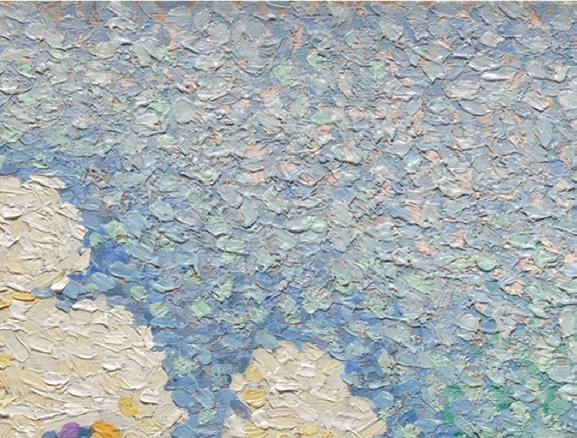

The Cleveland Museum of Art is funded in part by residents of Cuyahoga County through a public grant from Cuyahoga Arts & Culture. This exhibition was supported in part by the Ohio Arts Council, which receives support from the State of Ohio and the National Endowment for the Arts.



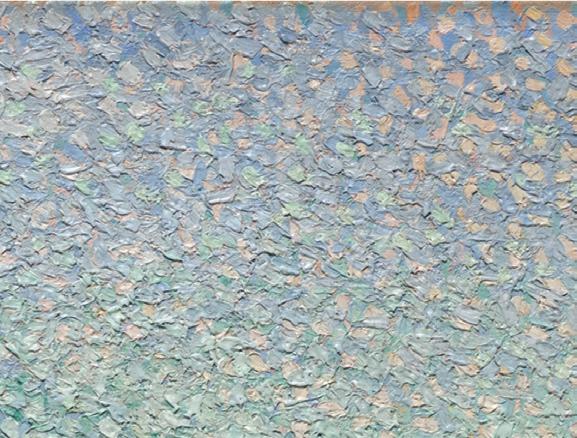
Henri-Edmond Cross (French, 1856–1910). The Pink Cloud, c. 1896. Oil on canvas; 54.6 x 61 cm. Nancy F. and Joseph P. Keithley Collection Gift, 2020.106











We believe that all Cleveland youth should have access to high-quality arts education. Through the generosity of our donors, we are investing to scale up neighborhood-
based programs that now serve 3,000 youth year-round in music, dance, theater, photography, literary arts and curatorial mastery. That’s a symphony of success. Find your passion, and partner with the Cleveland Foundation to make your greatest charitable impact.
